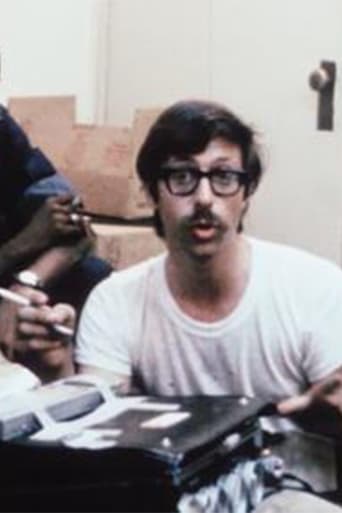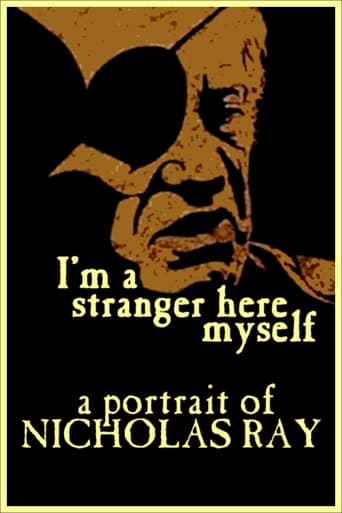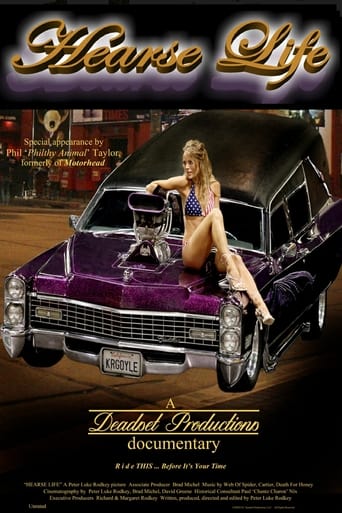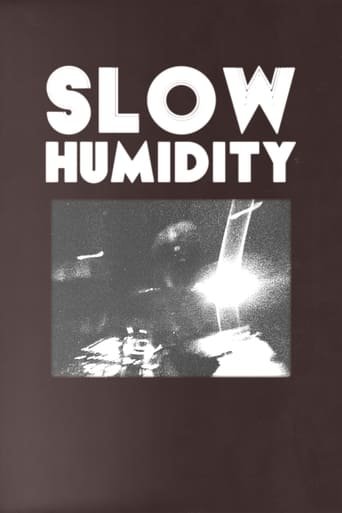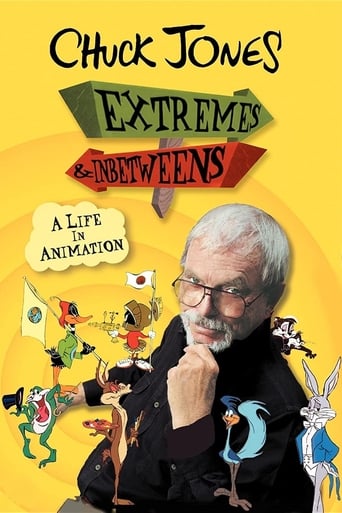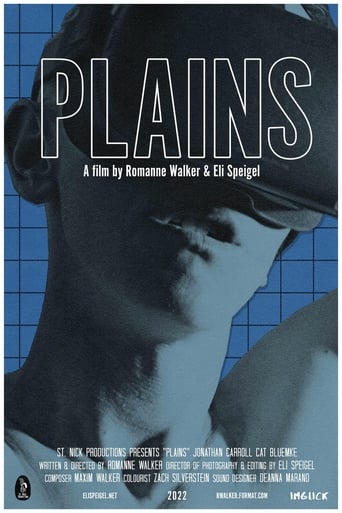

Symbiopsychotaxiplasm: Take One (1968)
In Manhattan's Central Park, a film crew directed by William Greaves is shooting a screen test with various pairs of actors. It's a confrontation between a couple: he demands to know what's wrong, she challenges his sexual orientation. Cameras shoot the exchange, and another camera records Greaves and his crew. Sometimes we watch the crew discussing this scene, its language, and the process of making a movie. Is there such a thing as natural language? Are all things related to sex? The camera records distractions - a woman rides horseback past them; a garrulous homeless vet who sleeps in the park chats them up. What's the nature of making a movie?
Watch Trailer
Cast
Similar titles
Reviews
This is one of the few movies I've ever seen where the whole audience broke into spontaneous, loud applause a third of the way in.
It’s not bad or unwatchable but despite the amplitude of the spectacle, the end result is underwhelming.
The tone of this movie is interesting -- the stakes are both dramatic and high, but it's balanced with a lot of fun, tongue and cheek dialogue.
The film never slows down or bores, plunging from one harrowing sequence to the next.
From its overtly innocuous title to its jabbering cast and crew this "artistic happening" bleeds sophomoric pretense by the gallons in a film filming a film with another cameraman filming both. It is a disturbing waste of film stock to witness as cast and crew go around in circles breathing life into a moribund idea where little if anything outside of annoyance and frustration are achieved. While the concept is intriguing the realization is a sloppy mess of lack of communication as director William Greaves looks ill prepared from the get go as he turns his film students loose in Central Park. It's all avant lard as Greaves directs a pair of actors in a torpid fiction scene followed by discussion while a cop and homeless man try to give the doc guerrilla theatre credentials with lack luster intrusion. Meanwhile the camera runs eating up footage on the mundane as Greaves hazily pontificates and his crew attempts to make sense of what is going on, venturing ideas on the purpose and point of the exercise in a staff meeting with Greaves excluded. Some see it as genius, some see it as a waste of time. I am solidly with the latter. In the era of video and re-usable tape this monstrosity might be longer and even worse but at least it would not be committing the sin of wasting all that film stock on superfluous chatter and the hope something might be worth lensing on a mound or foot bridge in Central Park. Instead we have a clueless director and his acolytes bumping into each other with little to say or add to a film ( or films) in disarray which seems to be its purpose when it is more than evident this screen testing is for a film that will never get made but needed to get this faux cinema verite off the ground. A documentary whose lynch pin is based on a fiction is a bad place to start and it it makes Symbiowhatever little more than a pretentious self mockery.
Symbiopsychotaxiplasm: Take One (1968) *** (out of 4) Incredibly fascinating little gem from director William Greaves works as a feature film but also a documentary. Basically what we have here is Greaves shooting an actual feature dealing with a husband and wife fighting about their life while walking through Central Park. That's the "feature" side of things. While they're shooting this they also have two separate cameras picking up all the drama and action going on in real life. So, the film is one where we get to see the actual feature being shot but also a documentary covering the making of the actual movie. I can't say I had ever heard of this movie before it popped up on Turner Classic Movies but part of what makes being an open-minded film buff so great is that you often come across gems that you might not have had you simply didn't expand in your viewing habits. It's really hard to explain this feature or why it works so well but I found it to be rather fascinating because there are moments where we get a third aspect of the "film" which is when the production crew are gathered in a room where they discuss where the film should go and their opinions on whether or not Greaves is doing a good job directing. These three aspects of a "film" are so interesting that you have to wonder why someone didn't try doing a picture like this a lot earlier and while there are certainly some creaky moments, overall this is a rather genius thing to try and pull off and you really can't help but applaud the director. There are some very funny moments in the behind-the-scenes section including a bit where they're filming and a group of people gather to watch and the director has to explain to them what they're doing and why they need to be quiet so that they don't ruin the scene. There are other moments where the crew fight about how much film is left, there's a sequence with a cop wanting to see some permits and then of course there's the actual film being shot, which contains a couple actors who are very good in their parts. It's also interesting to see the actors playing their parts and coming up with ideas to run past the director. I think what I really pulled away from this movie, unlike any other documentary, is how everyone working on a film thinks they're the most important part. The actors are focused on their job. The director has his job. The crew have their job and everyone is so focused on what they're doing that it's hard to really see what the other person's job is and why it might be just as important. This movie certainly isn't for everyone but those who enjoy movies about making movies should find themselves entertained.
Symbiopsychotaxiplasm points the way toward so many later development in film. It manipulates reality by provoking the hapless cast, crew and bystanders to play roles by provoking them. The director of the film uses his own behavior as a Rorschach test. The whole genre of reality television as well as avant-garde documentary styles are anticipated in this film.In addition to its historical importance the film is fascinating on its own terms for anyone who likes to think about the nature of performance vs. reality. Gender, race, sexuality and the march of time also make appearances. Criterion has done its usual terrific job in rescuing this forgotten masterpiece from undeserved obscurity.
A film of high intelligence and activity. As well as being a strong capsule of the time and persona that was the 60's, the film is also TRULY a surprise in its forward-thinking themes and the unique presentation of the system of power in a group. William Greaves appoints himself to the authoritative role in the group. He asks his crew members to film and film and keep filming. First the two actors, then the crew filming the actors, then the entire set including bystanders, policemen, and finally a homeless man whose been living in bushes in Central Park for 9 weeks.Greaves edits the film (thousands of feet) together and surprisingly makes a strong narrative with an interesting arc and motivations. Don't expect to be bored by this film. Each of crew make for engaging conversationalists and often times are voicing the thoughts that the observer has watching this film. Greaves does well at integrating the multiple camera takes using synchronized three-in-one pictures and other attention shifting methods.In the end, the film will really only be effective if it's what YOU'RE looking for: if you're looking for some abstract arty film that feeds your own self-indulgent ego while never having a point, look elsewhere. If you're looking for a film that will have you talking and thinking long afterward about the desire for honesty and sincerity in documented "reality" and the inevitable transparency that comes of it, then this is the perfect film.


